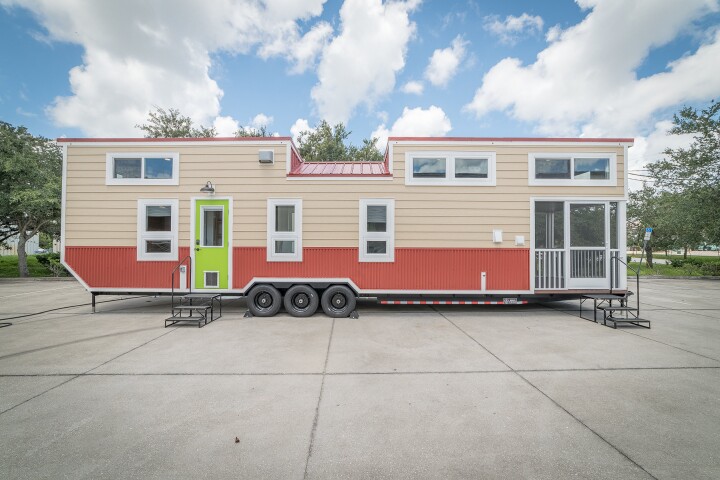Six and a half years after the previous iteration, the Fraunhofer Institute has released an update to Care-o-bot. The affordable service robot for personal and professional use has been made it more agile, more modular and much more personable , bringing science fiction fantasy a little closer to reality.
The third-generation Care-O-bot announced back in 2008 was an advanced piece of hardware for its time that could fetch you drinks, place emergency calls and host videoconferences, but which had the rather uninteresting appearance and demeanor of a timid, somber-looking butler.
Compared to its predecessor, Care-O-bot 4 is a significant step forward. This latest iteration is much more agile, having gone from 20 degrees of freedom to 31 (including spherical joints at the torso and neck to let it bend and twist with grace). Its communication skills have also been revamped, and it can now convey information through a touchscreen, body gestures, sounds, text-to-speech, and even a laser pointer embedded in its arm.

When pitted against the ten-fingered, backwards-running, one-leg hopping Asimo the Care-O-bot doesn’t look all that impressive, but nor was it ever meant to compete with Honda’s flagship robot. Unlike its pricey Japanese cousin, Care-O-bot was designed from the start to be as economical as possible, with large portions of its internals made out of folding sheet metal and one of its standard sensors being a stock Microsoft Xbox Kinect.
The robot consists of six independent and configurable modules, from the rolling base, which can work by itself as an autonomous transportation unit, to either one or two robotic arms with seven degrees of freedom each and that, besides the laser pointer mentioned above, also include time-of-flight (TOF) cameras to measure real-time distance from its surroundings.
"Customers can choose between a wide range of sensors," Fraunhofer Institute’s Dr. Ulrich Reiser tells us. "You might choose to have color cameras in the front and a 3D TOF camera in the back, or several 3D-TOF cameras. The sensor ring is equipped with its own computation unit and receives power supply and Ethernet via standard connector, so you might have several sensor rings and exchange them for different applications."

The Care-O-bot could find use as a high-tech waiter, a mobile information center in museums, stores and airports, to collect and deliver objects or, like its predecessor, as a mobile personal and medical assistant.
Based on their experience from previous iterations, Reiser and team found that social interaction was crucial to making their robot more compelling, engaging, and acceptable to humans. That is why this time around Care-O-bot 4 tries to detect the current mood in its surroundings and react accordingly, communicating emotions (as facial expressions) through a touchscreen. In other words, if you believe its creators, Care-O-bot won’t just care for you as a patient , it’ll care about you too.

Dr. Reiser tells us that battery capacity is 30 Ah (at around 48 V) and will typically last between three and five hours, depending on factors like the specific application and the number of degree of movements used.
Pricing will be announced within the next two months, and sales are set to begin in the second half of the year. The mobile base will be available by the end of the second quarter; the torso, arms and head modules in the third trimester; and the spherical joints by the end of the year. The Care-O-bot 4 will be initially available in Europe only and expand to the US later on.
You can watch the video below for a short demo (warning: includes robot-to-human flirting).
Source: Care-O-bot












